 Back in the old days, when my dad would take us all out in his LaSalle to the five-and-dime for a grape Nehi while Rudy Vallee warbled “Whole Lotta Love”… Um… Wait. They didn’t make LaSalles when my dad was born, Rudy Vallee had given way to big bands, and my earliest memory of a new song was “Something” by the Beatles when I still had not known the horror of kindergarten. Let’s start again. Back in high school, before the age of word processors, cloud storage, and AI, we were taught to write in drafts. In fact, my favorite English teacher Mr. Murphy (still going strong at 90!) told us to write out the first draft by hand before sending it across the typewriter. Subsequent drafts, after chopping up with a red pen*, were to fix flow, spelling, typing, etc. If the truth be known, I was 30 before I could type, and by then, word processors and computers were a thing.
Back in the old days, when my dad would take us all out in his LaSalle to the five-and-dime for a grape Nehi while Rudy Vallee warbled “Whole Lotta Love”… Um… Wait. They didn’t make LaSalles when my dad was born, Rudy Vallee had given way to big bands, and my earliest memory of a new song was “Something” by the Beatles when I still had not known the horror of kindergarten. Let’s start again. Back in high school, before the age of word processors, cloud storage, and AI, we were taught to write in drafts. In fact, my favorite English teacher Mr. Murphy (still going strong at 90!) told us to write out the first draft by hand before sending it across the typewriter. Subsequent drafts, after chopping up with a red pen*, were to fix flow, spelling, typing, etc. If the truth be known, I was 30 before I could type, and by then, word processors and computers were a thing.
But I stuck with the draft concept, though I rarely wrote longhand. My wrists don’t like it. And starting with the original Mrs. Hottle’s Canon word processor, the concept of typing all drafts took off. I no longer had to worry about margins. You could set a default font. You just typed, then saved to disk. Then came the PC and Microsoft Works. Then Word Perfect. Then Word. Many took it a step further with Scrivener. I’ll talk more about the various tools later.
As I started getting into professional markets, I met a writer named Dave White, now a school teacher in New Jersey. At the time, Dave was a grad student and just getting started as a novelist. Dave decided to abandon the draft concept. Everything is stored electronically, so you’re not rewriting (except when you are. Then you’re overwriting the original or copying and pasting. Or cutting.) So why make multiple files?
It’s a fair point. He’s been a more successful novelist than I’ve been, and, most importantly, the system works for him. Yet I still do drafts despite working in IT for [mumble mumble] years. Why?
Versioning. As Jim Winter, I wrote Holland Bay over a 12-year period, starting with a 105,000-word first draft that did not have a minor character who just had to spin up their own subplot. I didn’t so much finish the draft as stopped when a couple of the main characters finished their arcs. Additionally, I make much of how this series was inspired by 87th Precinct and The Wire. Rereading it, I realized at least two scenes were inadvertently copied from The Wire. You will never read that draft unless my family does something stupid like file my drafts with Wilmington College or my old high school. (Please don’t do that.) The second draft, while still considerably different, looks more like what you would buy today. But not entirely. Some point-of-view characters had to be pared down, extraneous scenes cut. And then an agent looked at it. She asked for a rewrite. Then I tweaked it to run past a Big Five publisher. Then Down & Out Books had some changes. All these versions are different files. Why?
I work in IT. In fact, I work in software. I’m of the mindset that every version of something should be backed up so it’s available if you scrap a new version. Believe me, in both software and writing, that’s a huge concern. Now, I may be splitting hairs. If you came up when PCs were a thing, you probably back everything up. In fact, you likely store it in the cloud. Is that drafts? Well, most of us who do actual drafts are a bit more systematic about it.
As an editor, I receive manuscripts that are labeled “v03,” which means Down & Out went back and forth with the author before sending it to me. Plus they send me partially formatted manuscripts. I always keep the original version, whether it’s from a publisher or a freelance client, and make a copy labeled “_edited.” That’s both a signal to the writer this has been worked on and gives me a fall back in case something goes horribly wrong.
It all goes back to the old adage “Don’t fall in love with your first draft.” Sometimes, someone turns in a clean draft, and people like me just move commas around. But normally, a rough draft looks just like that. Rough. Have a system for the revisions. And stick to it.
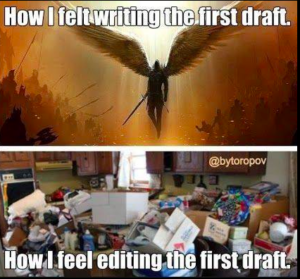
*A rather pretentious roommate a former spousal unit and I had protested it was a blue pen, and we were not aloud to argue because she edited. Badly. And every agent, editor, and writer I’ve spoken to since has said, “Red pen.” Blue was for making photocopies in an age when the copier couldn’t see blue.
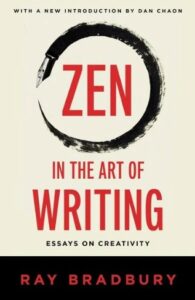 Ray Bradbury wrote a book about it. He came up in the age of pulps. His best known science fiction novel,
Ray Bradbury wrote a book about it. He came up in the age of pulps. His best known science fiction novel,  Writers get a lot of inspiration from music. From other writers. From poetry. It’s only natural they would want to quote it.
Writers get a lot of inspiration from music. From other writers. From poetry. It’s only natural they would want to quote it. arks, which is a challenge. Em dashes (or for the more pedantic, dialog dashes. Hate to burst your bubble, nitpickers, but the readers who pick up on this don’t care. Neither do I.) are generally used in Romance languages like Spanish, Italian, or French. I’m not sure why writers in English–any dialect of English–choose to do this, but then Cormac McCarthy dispensed with quotation punctuation altogether.
arks, which is a challenge. Em dashes (or for the more pedantic, dialog dashes. Hate to burst your bubble, nitpickers, but the readers who pick up on this don’t care. Neither do I.) are generally used in Romance languages like Spanish, Italian, or French. I’m not sure why writers in English–any dialect of English–choose to do this, but then Cormac McCarthy dispensed with quotation punctuation altogether.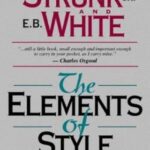 The Elements of Style
The Elements of Style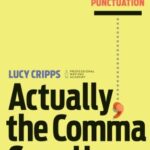
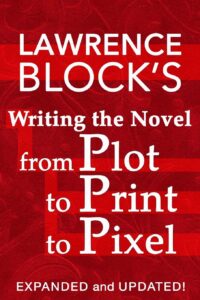 Writing the Novel
Writing the Novel  On Writing
On Writing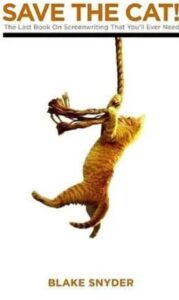 Save the Cat
Save the Cat Apologies to Steve Perry
Apologies to Steve Perry It’s no secret I have a love-hate relationship with my first novel. Published as James R. Winter (later shortened to “Jim Winter” because the former sounded pretentious),
It’s no secret I have a love-hate relationship with my first novel. Published as James R. Winter (later shortened to “Jim Winter” because the former sounded pretentious), 

